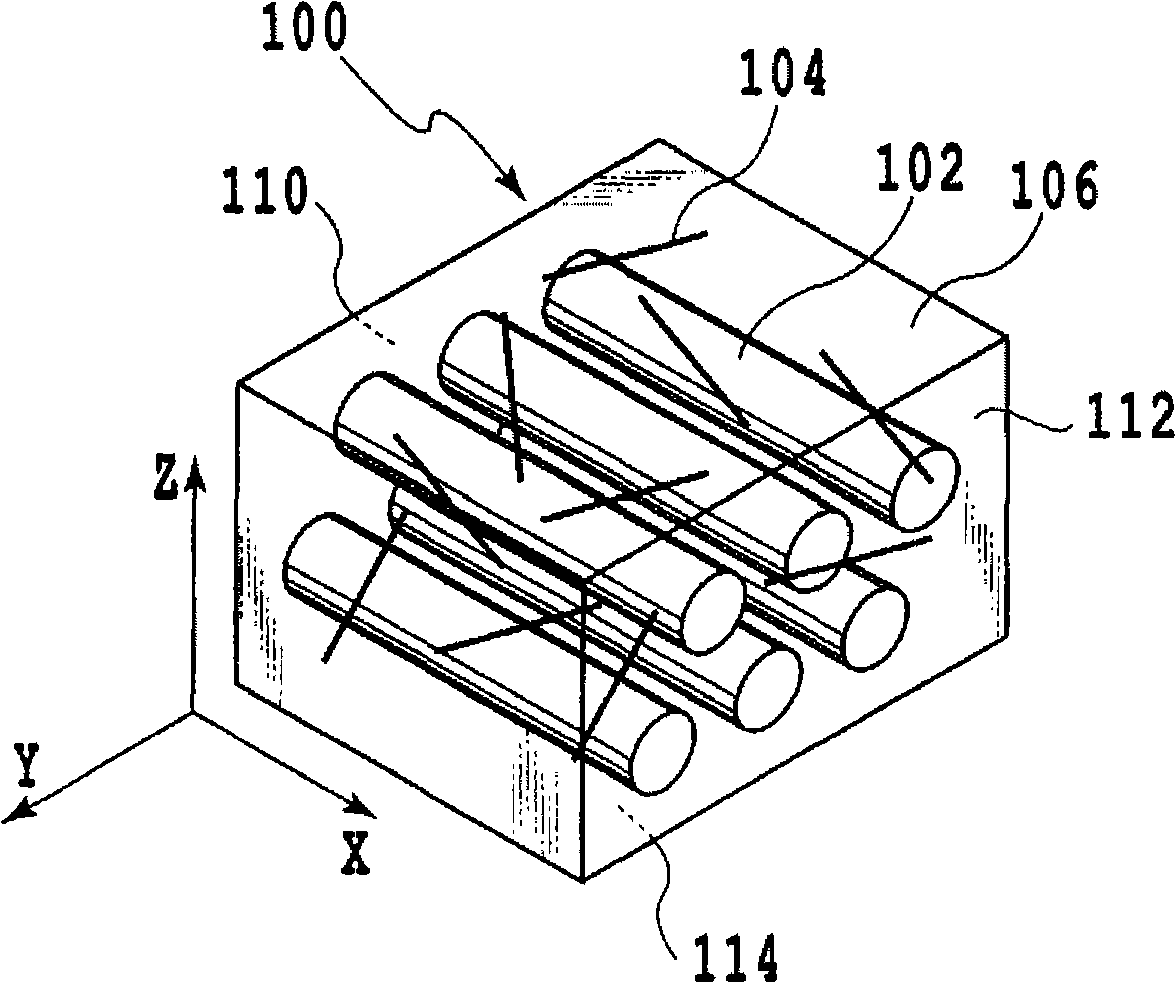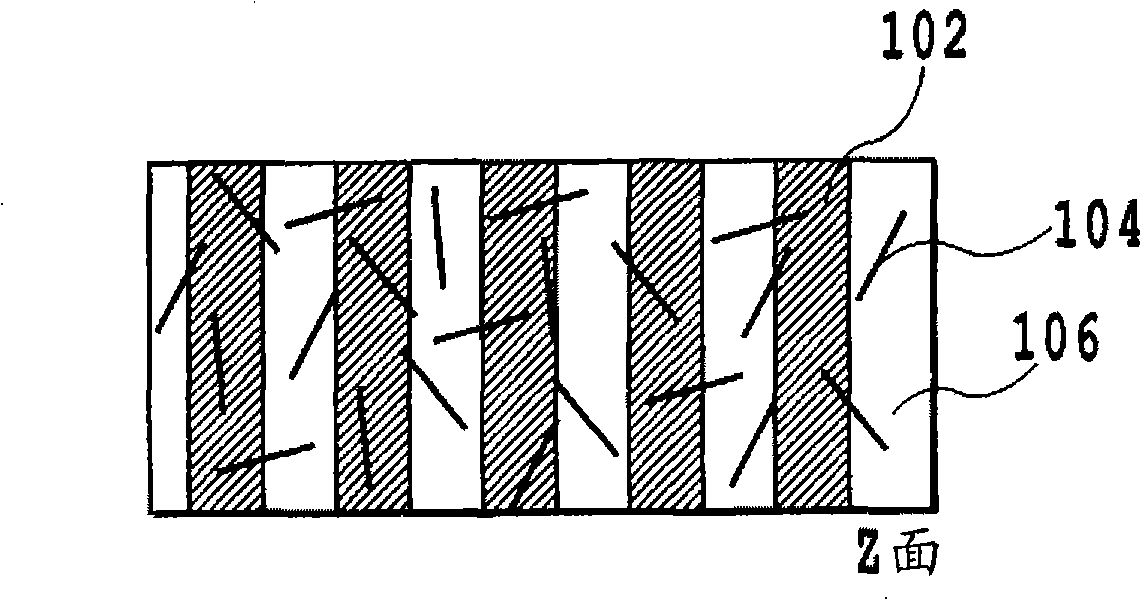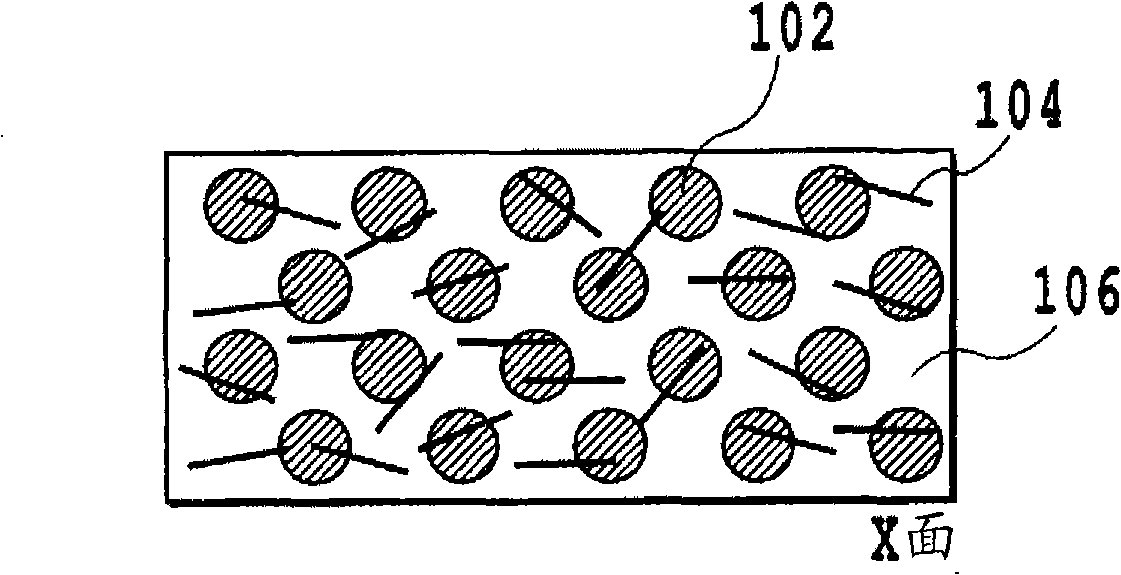Metal-based composite material containing both micro-sized carbon fiber and nano-sized carbon fiber
A composite material and nano-sized technology, which is applied in thin material processing, transportation and packaging, circuits, etc., can solve the problems of molten copper and poor wettability of nanofibers, and achieve the effect of light weight
- Summary
- Abstract
- Description
- Claims
- Application Information
AI Technical Summary
Problems solved by technology
Method used
Image
Examples
Embodiment 1
[0126] An example of an aluminum-vapor-grown carbon fiber nanofiber-pitch-based carbon fiber composite material is shown.
[0127] Aluminum powder (manufactured by Showa Denko: average particle size 5 μm), vapor-grown carbon fiber nanofibers (hereinafter VGCF, manufactured by Showa Denko: diameter 150 nm, aspect ratio 60 or more), pitch-based carbon fiber (diameter 10 μm, 2000 fiber bundles) were used.
[0128] 80 cc of isopropanol was added to 47.5 g of aluminum powder and 2.5 g of VGCF, and mixed with an ultrasonic mixing device for 1 hour to obtain an aluminum-nanofiber mixture.
[0129] The fiber bundle of pitch-based carbon fiber is immersed in the suspension obtained as described above, and the aluminum-nanofiber mixture is adhered to the fiber bundle.
[0130] Dry by air drying for 24 hours. As a result, a metal powder-nano-sized carbon fiber attached fiber composed of 33.3% by weight of aluminum powder, 1.7% by weight of VGCF, and 65% by weight of pitch-based carbon fibers...
Embodiment 2
[0137] An example of an aluminum-vapor-grown carbon fiber nanofiber composite material is shown.
[0138] Aluminum powder (manufactured by Showa Denko: average particle size 5 μm), vapor-grown carbon fiber nanofibers (hereinafter VGCF, manufactured by Showa Denko: diameter 150 nm, aspect ratio 60 or more), pitch-based carbon fiber (diameter 10 μm, 2000 fiber bundles) were used.
[0139] 80 cc of isopropanol was added to 42.5 g of aluminum powder and 7.5 g of VGCF, and mixed with an ultrasonic mixing device for 1 hour.
[0140] Dry by air drying for 24 hours. As a result, a mixed powder of 75% by weight of aluminum powder and 15% by weight of VGCF was obtained.
[0141] This mixed powder was filled in a graphite sintering mold having a 20 mm square cross section. The mold was sintered using a pulse current sintering machine in a vacuum of 10 Pa, a pressure of 50 MPa, and a sintering temperature of 600° C. to obtain a composite material. Table 3 shows the thermophysical properties o...
Embodiment 3
[0146] Each of the composite materials obtained in the foregoing Examples 1 and 2 was filled in a graphite sintering mold having a 20 mm square cross section. A pulse energization sintering machine was used to sinter the mold in a vacuum of 10 Pa, a pressure of 50 MPa, and a sintering temperature of 600° C. to obtain a composite material with no micron-sized carbon fibers in the surface area. The composite material is a composite material in which each layer has the characteristics obtained in Examples 1 and 2 above.
PUM
| Property | Measurement | Unit |
|---|---|---|
| diameter | aaaaa | aaaaa |
| particle diameter | aaaaa | aaaaa |
| particle diameter | aaaaa | aaaaa |
Abstract
Description
Claims
Application Information
 Login to View More
Login to View More - R&D
- Intellectual Property
- Life Sciences
- Materials
- Tech Scout
- Unparalleled Data Quality
- Higher Quality Content
- 60% Fewer Hallucinations
Browse by: Latest US Patents, China's latest patents, Technical Efficacy Thesaurus, Application Domain, Technology Topic, Popular Technical Reports.
© 2025 PatSnap. All rights reserved.Legal|Privacy policy|Modern Slavery Act Transparency Statement|Sitemap|About US| Contact US: help@patsnap.com



